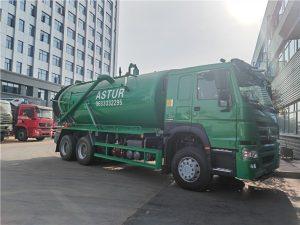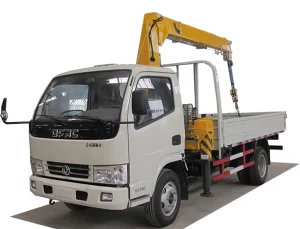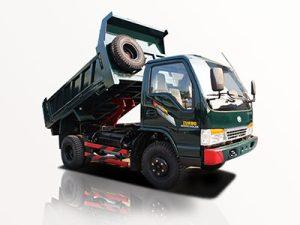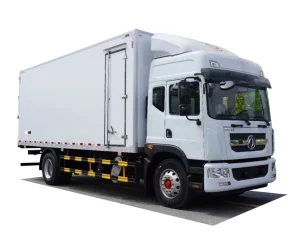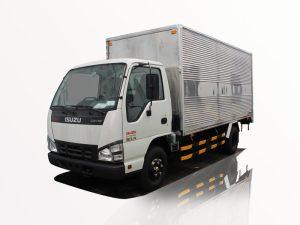Monday to Saturday - 8:00 -17:30
Understanding Fire Water Tenders: Essential Tools for Firefighting Operations
In the realm of firefighting, the importance of having reliable equipment cannot be overstated. Among the various apparatus utilized in firefighting, the fire water tender stands out as a crucial instrument. This article delves into the intricacies of fire water tenders, exploring their functionality, types, and significance in fire safety and emergency response. It also provides practical tips on selecting and using these vehicles effectively, with answers to frequently asked questions.
What is a Fire Water Tender?
A fire water tender is a specialized vehicle designed to transport large quantities of water to the scene of a fire. Unlike standard fire trucks that may carry water and equipment, fire water tenders are focused on providing a reliable water supply, especially in rural areas where hydrants may not be available. These vehicles play a crucial role in firefighting operations, especially in assisting fire engines and aerial apparatus.
The Importance of Fire Water Tenders
Fire water tenders serve several essential functions in firefighting:
- Water Supply: They provide a crucial water source when conventional hydrant resources are lacking.
- Mobility: Fire water tenders can access remote areas to deliver water where it is most needed.
- Support Operations: These vehicles support fire engines by enabling sustained firefighting efforts.
- Versatility: Many tenders can be adapted for other emergency services, making them valuable assets to fire departments.
Types of Fire Water Tenders
1. Standard Tankers
Standard tankers are equipped with a large tank that holds water, typically ranging from 1,000 to 3,000 gallons. They are suitable for general firefighting needs and come with a pump for quick water discharge.
2. Portable Tenders
Portable tenders are smaller and lighter, designed for easy transport. They often have removable tanks and can be used in situations where larger trucks cannot access.
3. Custom-built Tenders
Many fire departments opt for custom-built water tenders tailored to their specific needs. These vehicles can include features like built-in foam systems or high-pressure pumps.
4. Multi-Function Tenders
Multi-function water tenders combine water transportation with additional firefighting capabilities, such as hose storage and aerial ladder systems.
Main Features of Fire Water Tenders
1. Water Tanks
The water tank is perhaps the most critical component of a fire water tender. It is constructed from durable materials to withstand heavy use and is designed for quick loading and unloading.
2. Pumps
Pumps facilitate the transfer of water from the tank to the fire scene. They may vary in capacity, with some capable of delivering water at high pressure for effective fire suppression.
3. Hose Reels
Integrated hose reels allow for quick access to hoses. This feature is essential for immediate firefighting activities, enabling firefighters to deploy hoses without delay.
4. Emergency Lights and Sirens
Fire water tenders are equipped with emergency lights and sirens to ensure visibility and alert surrounding traffic while responding to incidents.
5. Water Flow Control Valves
Water flow control valves are vital for managing the output water pressure and volume, ensuring effective delivery during firefighting operations.
Maintenance of Fire Water Tenders
Routine Checks
Regularly scheduled maintenance checks are crucial for keeping fire water tenders in optimal condition. This includes inspecting the tank for leaks, checking pump functionality, and ensuring all related equipment is operational.
Cleaning Procedures
After responding to fires, it’s essential to clean and sanitize the water tank and other components to prevent contamination and ensure that the system is safe for future use.
Seasonal Maintenance
Especially in regions with extreme weather conditions, seasonal maintenance checks can identify issues that may arise from temperature fluctuations, such as freezing water in tanks or hoses.
Finding the Right Fire Water Tender for Your Needs
When selecting a fire water tender, consider the following factors:
1. Volume Requirements
Evaluate the typical water volume needed for your area based on the types of emergencies you encounter. Choose a tender that can adequately meet those demands.
2. Terrain and Accessibility
Consider the regions you will cover. If your area has difficult terrains, opt for a portable or lighter tender that can navigate those restrictions.
3. Budget
Fire water tenders can vary significantly in price. Assess your budgetary constraints and seek tenders that provide value within your financial capabilities.
4. Customization Options
For fire departments with unique needs, explore customization options. This could include specific pump types, tank sizes, or the inclusion of other firefighting tools.
Practical Tips for Using Fire Water Tenders
1. Proper Water Loading Techniques
Ensure efficient water loading by using designated filling sites with adequate infrastructure for fast refills. Understand the pump’s capacity and ensure that your loading times align with operational needs.
2. Training Personnel
Regularly train your firefighting team on the operations and maintenance of fire water tenders. Familiarity with the equipment will enhance efficiency during emergency responses.
3. Strategic Deployment
Deploy tenders strategically in high-risk areas to ensure rapid response times. Having tenders stationed in critical locations can save valuable minutes during a fire outbreak.
4. Implementing Communication Protocols
Establish clear communication channels for coordinating water tender deployment during fires. This includes using radios and other communication devices to manage resources effectively.
Cost Considerations for Fire Water Tenders
The cost of fire water tenders can vary widely. Below is a table summarizing key cost factors:
| Factor | Price Range |
|---|---|
| Standard Tanker | $200,000 – $400,000 |
| Portable Tender | $50,000 – $150,000 |
| Custom-Built Tender | $250,000 – $600,000+ |
| Maintenance Costs (Annual) | $5,000 – $15,000 |
Frequently Asked Questions (FAQs)
1. How much water can a fire water tender carry?
Most fire water tenders carry anywhere from 1,000 to 3,000 gallons of water. However, larger custom models can hold significantly more.
2. What is the typical lifespan of a fire water tender?
With proper maintenance, fire water tenders can last anywhere from 15 to 25 years, depending on usage and the manufacturer’s quality.
3. Can fire water tenders be used for purposes other than firefighting?
Yes, many fire water tenders are versatile and can be used for dust control in construction sites, water supply for construction projects, and even for emergency medical services.
4. Are training programs available for new fire water tender operators?
Yes, many fire departments offer training programs for operators. It’s crucial to undergo proper training to ensure safety and efficiency during operations.
5. How do I maintain a fire water tender?
Regular maintenance checks, including inspecting the water tank, pump, and valves, as well as routine cleaning and seasonal checks, are critical for keeping a fire water tender operational.
6. What advancements are being made in fire water tender technology?
Recent advancements include improved pump technology, integration of GPS for efficient routing, and designs focused on reducing weight while maximizing water capacity.



